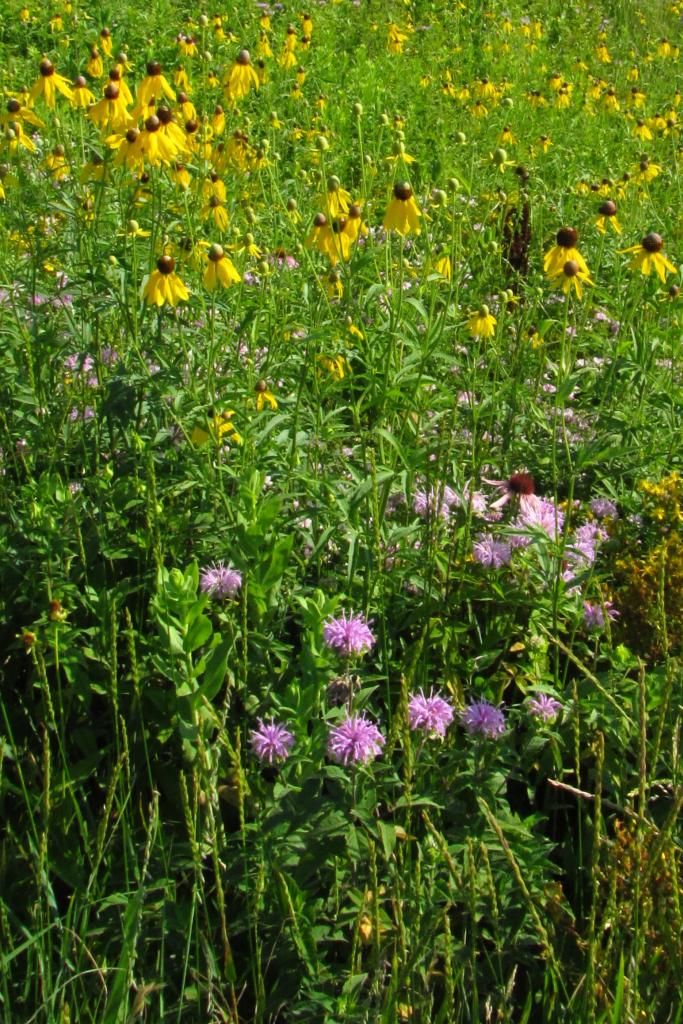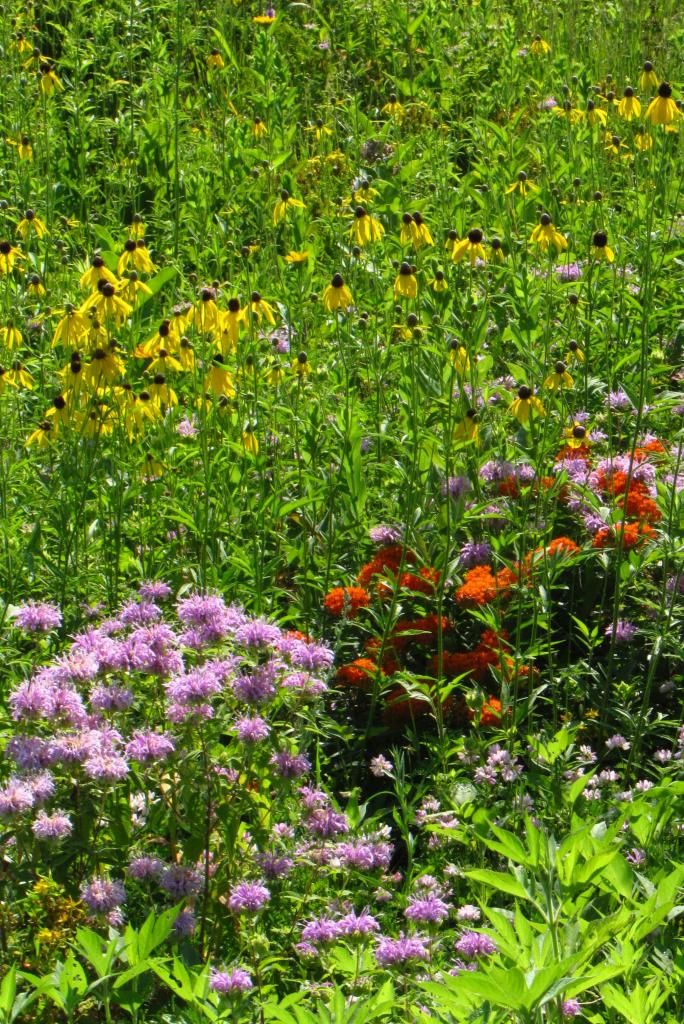Today’s featured flower is one of the most recognizable tallgrass prairie flowers. You might also find it blooming along Iowa roadsides or bike trails between June and September. I’ve enclosed a few photos of yellow coneflowers below, along with a one picture of a different Iowa wildflower it closely resembles.
Incidentally, if you drive through eastern Iowa on I-80 you are likely to see patches of bright orange butterfly milkweed to the side of the highway.
This is an open thread: all topics welcome.
Yellow or gray-headed coneflower (Ratibida pinnata) is found in most of the eastern U.S. and Canada. What look like yellow petals are ray flowers, and there are usually five to ten of them. The cone in the center is a disk of tiny flowers. Before those flowerets open, the disk is green or gray; after they open, the disk appears brown, or sometimes purple. I found a large group of these flowers in a prairie patch along the road that connects I-380 to the Cedar Rapids airport. Some of the disks are covered in flowerets, while others still look gray. The pink flowers near the left edge of the photo are horsemint, also known as bergamot or bee balm. You can also see a couple of purple coneflowers in the background near the center. I don’t know the name of the yellow asters with orange disks.
According to Wildflowers of the Tallgrass Prairie by Sylvan Runkel and Dean Roosa,
American Indians made a tea from the flower cones and the leaves of yellow coneflower. The Meskwaki used the root to cure toothaches. […]
Yellow coneflower grows readily from seed, which is usually produced abundantly. For those who would like to start a garden of prairie flowers, yellow coneflower is a good dependable starter.
This plant is often found growing in areas of former prairie where all or nearly all of the original plants have disappeared. It is a showy survivor.
Here’s another group of yellow or gray-headed coneflowers with some horsemint in the foreground and one purple coneflower.
At this same prairie patch near the Cedar Rapids airport, I was struck by the contrast between yellow coneflowers, horsemint, and butterfly milkweed.
Finally, I enclose a picture I took on the restored prairie patch in Windsor Heights, just off the bike trail behind the Sherwood Forest strip mall. At first I thought these were also yellow or gray-headed coneflowers, but native plants expert and outstanding nature photographer Leland Searles explained that the longer shape of the disk identify this plant as Prairie coneflower (Ratibida columnifera).
Adding to the confusion, “prairie coneflower” is also a common name for Ratibida pinnata, the yellow or gray-headed coneflower. The two plants are easier to tell apart when Ratibida columnifera‘s ray flowers are red and yellow, as pictured here. But I’ve never seen the red and yellow version in any natural setting in Iowa.




